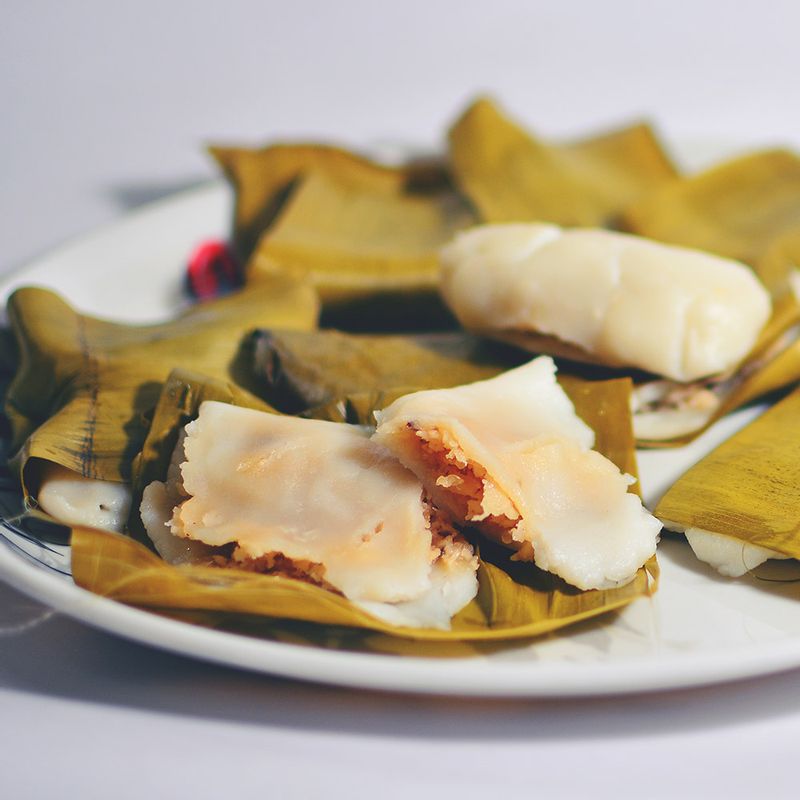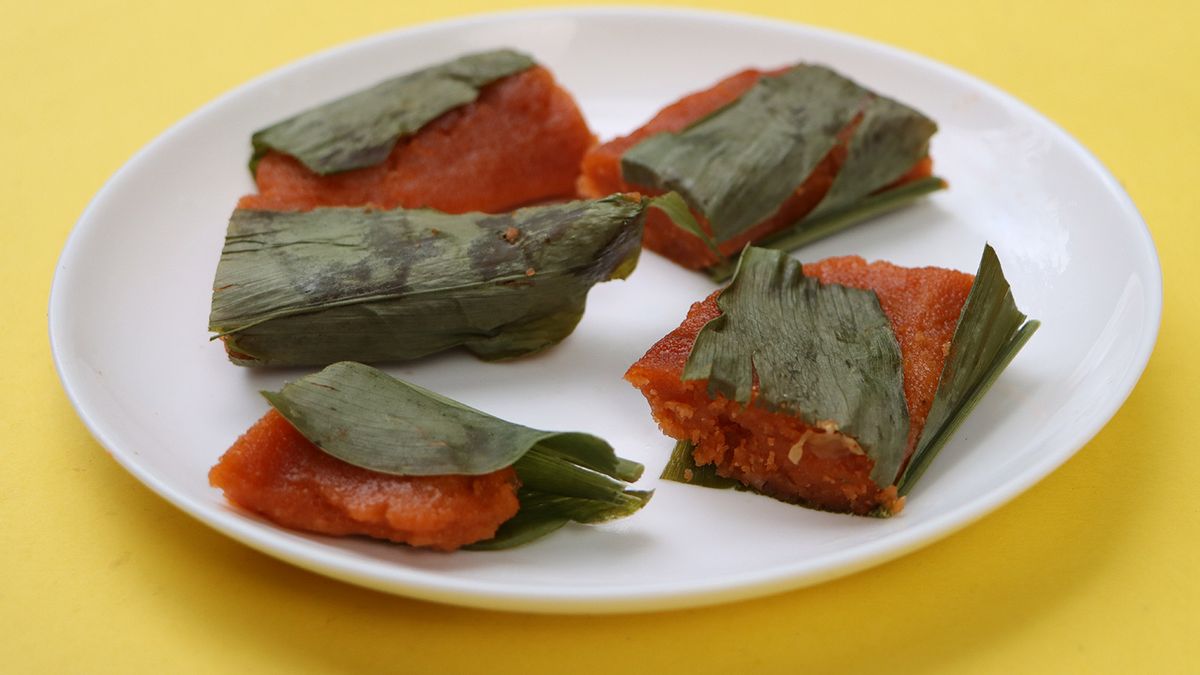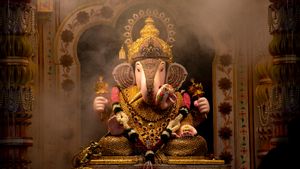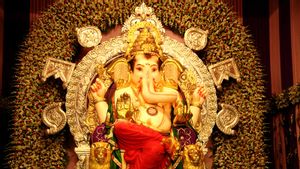Ganesh Chaturthi officially ushers in the festive season in India, especially in Maharashtra, where people are all set to welcome Lord Ganesha. While modaks are considered to be the piece de résistance during the 11-day-long Ganeshotsav, there are several other traditional offerings without which the celebrations are incomplete.
We got in touch with a few of communities in Maharashtra and Karnataka to share with us one such traditional recipe. Here’s what we discovered.
1. Patoli – Saraswat and Konkani

“Patoli (singular for patoleo) is made during Ganpati festival as prasad. It is a rice pancake, which is wrapped in turmeric leaves and steamed. These pancakes are filled with a mixture of jaggery, coconut, and cardamom powder,” says Janaki Bhat, a Dahisar resident. The highlight of this sweet dish according to her is, “The heavenly aroma and flavour that the turmeric leaves lend to the patoli.” The patoleo are also prepared during the festival of Nag Panchami by several communities on the Konkan belt.
Method
- Ground soaked rice into a thick smooth paste with a pinch of salt and keep aside. Make sure to use as little water as possible while grinding the rice.
- In a bowl, mix freshly grated coconut, grated jaggery, and cardamom powder.
- Wash the turmeric leaves and wipe them dry using a kitchen towel. Take a leaf, spread some rice paste across it evenly, and place a spoonful of the stuffing at its centre. Fold the leaf in half and place it in the steamer.
- Repeat the same procedure with the remaining leaves and then steam them all for around 12-15 mins
- Once cooked, serve them hot or cold, as you like them.
2. Rushichi Bhaji – Pathare Prabhu and 96 Kuli Maratha
This is a mix vegetable stew that is prepared on Rishi Panchami, the second day of the 11-day festival. Anjali Kadam, a homemaker and passionate cook from Dadar, Mumbai says, “Traditionally, the vegetables used in this dish were only the ones that grew in people’s backyard since women of the house weren’t allowed to step out on the day of Rishi Panchami. Today, things have changed. As far as our family is concerned, we use potatoes, drumstick (Moringa), amaranth leaves, green peas, and green chillies."
Method
- In a pan, heat some oil. Sauté green chillies and then add chopped vegetables (five vegetables of your choice).
- Once they’re almost cooked, add freshly grated coconut and salt (as per taste).
- Cover the pan with a lid, place little water on the lid, and let the veggies cook in the steam.
3. Roasted crab – Koli
Every year, many families across Maharashtra welcome Goddess Gauri into their homes to sit alongside Lord Ganesha. Her idol is brought home a few days before Anant Chaturdashi, the last day of the Ganpati festival. The women of the house dress up the idol in beautiful saris and jewellery and offer food to make Gauri happy.
Most rituals related to this goddess is the same across these communities; however, there is something that sets the Koli celebration apart. They offer a simple roasted crab to Goddess Gauri. Rujuta Mahadik, a resident of Sion, Mumbai, says, “Our offering for Gauri Mata is a fresh crab, seasoned with turmeric and salt. We roast it in the chulha and offer it as naivedya on the day the idol is brought home.” She further adds that many people also serve pomfret that is cooked in a signature Koli style. “The seafood preparations are not offered to Ganpati since he is a vegetarian. So, when we offer this to Gauri, there is a curtain put between the two,” Mahadik clarifies.
Method
- In a bowl, place a crab and sprinkle some turmeric and salt over it. Let it rest for a while.
- Turn the gas stove burner to the highest setting and set your crab on the flame.
- Use a pair of tongs to turn the crab until it is cooked.
4. Ghavan Ghatle – Konkanastha Brahmin
“Ghavan Ghatle is an authentic dish made for Goddess Gauri. It is basically rice flour pancakes (Ghavan) accompanied by a rice flour-based gravy dish (Ghatle),” says, Vaidehi Date, a homemaker from Thane. This is prepared a day after the goddess is welcomed home. “Many people from our community, not just offer this to Gauri Mata, but also to their married daughters. Along with treating them with Ghavan Ghatle, they gift them a sari, a coconut, and a few other things. We call it ‘oti bharane’.”
Method
For Ghavan
- In a bowl, add rice flour, salt, and milk. Mix everything together into a paste, making sure there are no lumps in it. Leave it aside for 20-30 minutes.
- After a while, add a little baking soda, and make pancakes from this paste.
For Ghatle
- In a pan, add grated coconut, salt, cardamom powder/seeds, water and jaggery, mix all the ingredients, and bring them to a boil
- Add rice flour to this and stir continuously, so there are no lumps in it. The rice flour is added to thicken the mix. Turn off the gas after a couple of minutes.
5. Gajbaje – Goud Saraswat Brahmin
For a couple of communities along the Konkan belt, Ganeshotsav is incomplete without Gajbaje, a vegetable stew. “This is our version of mixed vegetable curry. We make sure to use at least five vegetables to make gajbaje. Bottle gourd, raw bananas, yam, potatoes, lady fingers, and green peas are some of the veggies that are added to this dish,” says Padmini K, a homemaker from Chembur. Gajbaje may seem similar to rushichi bhaji, prepared by the Pathare Prabhu and 96 Kuli Maratha communities; however, the process of making it and its ingredients vary a little.
Method
- Cut all the vegetables (whichever you like) into bite-sized pieces.
- Cook them in a large pot with water and some salt. Turn off the flame when they are partially cooked.
- Meanwhile, roast a few red chillies in oil and grind them into a paste with freshly grated coconut and tamarind. Add this paste and a little salt to the partially cooked vegetables, mix well and cover the pot with a lid.
- Let it simmer on low flame until everything is cooked.
- The last step is to prepare tempering for the curry. In a pan, heat ghee and add mustard seeds and curry leaves. Once they splutter, pour it on the curry and mix gently.




